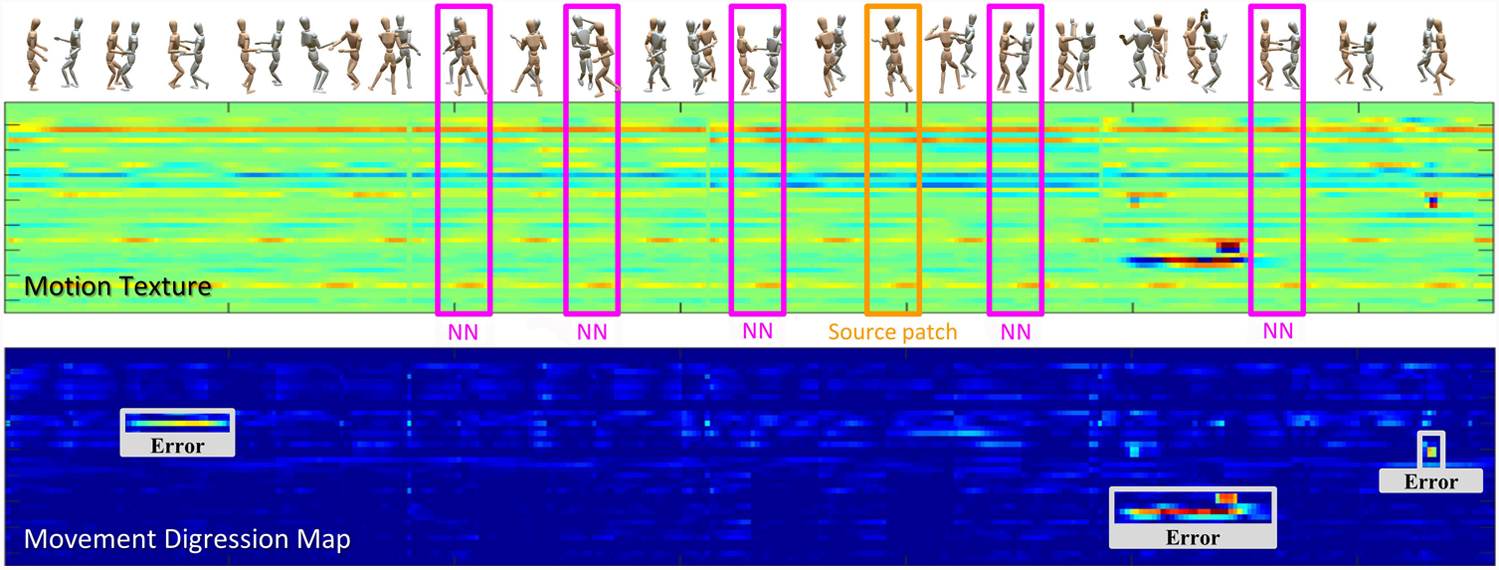Self-similarity Analysis for Motion Capture Cleaning

1. Unique Vs Erroneous
Here we show an example of how our method distinguish unique movements against erroneous. Please check the video here.
2. Comparison to alternative methods
Here we show comparison examples to (a) Feng et al. [FJX*15], (b) Holden et al. [HSKJ15], (c) Burke and Lasenby [BL16], and (d) Gløersen and Federolf [GF16]. Please check the contemporary dance, the salsa dance, and the locomotion examples.
References
[BL16] BURKE M., LASENBY J.: Estimating missing marker positions using low dimensional kalman smoothing. Journal of Biomechanics 49, 9 (2016), 1854–1858.
[FJX*15] FENG Y., JI M., XIAO J., YANG X., ZHANG J. J., ZHUANG Y., LI X.: Mining spatial-temporal patterns and structural sparsity for human motion data denoising. IEEE Transactions on Cybernetics 45, 12 (Dec 2015), 2693–2706.
[GF16] GLØERSEN Ø., FEDEROLF P.: Predicting missing marker trajectories in human motion data using marker intercorrelations. PLOS ONE 11, 3 (2016), 1–14.
[HSKJ15] HOLDEN D., SAITO J., KOMURA T., JOYCE T.: Learning motion manifolds with convolutional autoencoders. In SIGGRAPH Asia 2015 Technical Briefs (New York, NY, USA, 2015), SA ’15, ACM, pp. 18:1–18:4